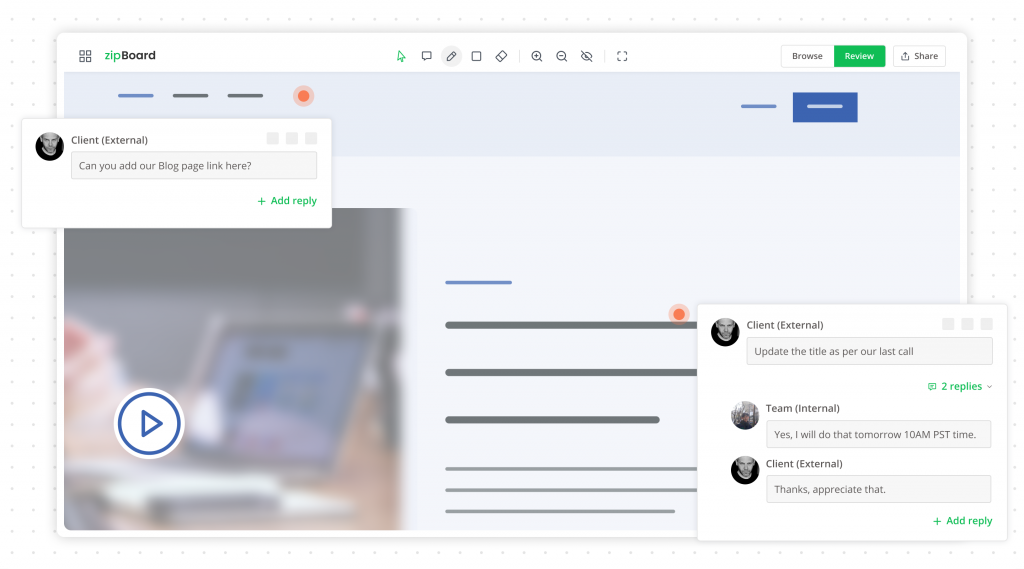How a content review process helps your marketing strategy?
29 Mar

Table of Contents
ToggleWe all are familiar with the words “Feedback and Review.” These words are often used interchangeably in the digital era. Broadly, feedback is split into two categories:
- Informal
We use informal feedback in our routine conversations regarding work. For instance, a casual conversation that contains a response about a person regarding their performance, behaviour, or interactions.
- Formal
Formal feedback is systematic and referenced communication. Ordinarily associated with assessment tasks, it covers the likes of marking criteria and competencies of standard. In addition, we often see it in annual reviews and disciplinary processes.
There can be many types, like when we provide feedback about any application or service after using, managers evaluating their employees’ performances, or a manager giving an opinion about the content in the content marketing process.
Feedback is an essential aspect of most business processes. It is especially important in evaluating marketing content that will be seen by your entire audience. Today we’ll be touching on the review process of a content marketing team.
Webinar
Build your content review and QA process
See how you can organize your QA process to build a robust and adaptive content review process.
Watch the webinarSteps of the Feedback & Review Process in Content Marketing
Feedback is a continuous process that is required each time a change is made and continues until the content is approved by all necessary parties. It prevents errors and increases productivity. Therefore, a company must run a content feedback and review process to reach its goals and objectives.
The process is usually implemented in content production teams, wherein the content is reviewed by the authorized person/HOD, and feedback is given individually. It helps the team to increase their efficiency and writers improve their skills.
The feedback & review process is comprised of 5 straightforward steps.
By following these five straightforward steps, you can be certain your content is error-free and sure to resonate with your audience.
Meeting
The initial stage is a kickoff meeting to discuss the content topic, criteria, guidelines, and objectives. It helps to outline the work, including every critical aspect.
Briefing
After the discussion, the administrator and content developer can make a factual briefing about the proposed topic. Instructions and guidelines should be written in detail to decrease errors. Both the writer and reviewer can reference this document throughout the content creation process.
Content Creation
After the briefing, the writer receives a green flag to start writing. Once the writer has completed the first draft, the piece is ready to receive its first round of feedback.
Review & Feedback Loop
This is the most critical phase of the process and probably the most time-consuming if the content is in short form. After taking a thorough read through, the reviewer gives his opinions, and the creator edits them according to the recommendations created by the reviewer. This procedure falls in a loop until the reviewer receives the appropriate content according to recommendations made.
Approval
In the previous stage, multiple people review the content, and it gets reshaped to meet the objectives stated in the briefing. Then comes the final and notable phase of approval. Finally, the content manager and the rest of the team agree that the content meets the guidelines, has undergone plagiarism checks, and is ready for publishing.
Agile Content Review Process
Take a deep dive into content review process and learn everything there is to it.
DownloadBenefits Of An Effective Content Feedback Process
Now let’s touch on how this review process helps a modern organization.
Evaluation holds a crucial place in the content production workflow; therefore, it is pretty essential to make an adequate evaluation process. Here are the advantages your content production team will see after executing a review and feedback cycle:
Brand Consistency
Having multiple sets of eyes review the content ensure the content is compliant with company regulations and is aligned with the brand’s values. Each piece of content passing through the same review cycle ensures overall consistency and uniformity.
Saves Time
The constant reviewing process cycle enables the content author to execute the work in less time with optimum efficiency. In addition, it decreases the misunderstandings among the group and makes the procedure error-free.
When working on designs, versioning can be a real pain. Make sure to use tools that allows you to categorize your reviews into different versions with ease. Check this article for some of the best practices to manage design projects.
Personal Growth Of Writers
Constant feedback on the content increases the authors’ skills.
They can identify areas for improvement and it motivates them to be continuously improving.
Spot Mistakes
Content should be double-checked before publishing. It filters the errors and areas to improve.
A simplified and efficient content review process ensures that each piece of content is reviewed before publishing.
Helps To Achieve Goals
High-quality content that is tailored to the audience, achieved by a thorough review process, helps organizations achieve their strategic objectives. For example, attractive content increases views, therefore, increasing brand recognition.
Tips For Building A Strong Content Review Process

Set Objectives For The Content
Before writing, objectives should be set to establish the intention of the content. An outline is an effective solution to define writing purposes. When setting the goals, apply the SMART goal theory. Establishing specific, measurable, achievable, relevant, and timely goals will ensure objectives are precise and trackable.

Content Policies, Standards, And Editing Guidelines
The content creation team should be equipped with a content governance model clarifying the content requirements. This model can be complemented by a brand book, which outlines the tone, style, and visual identity of the brand, ensuring that all content aligns with these guidelines.
It helps the writers to create content according to the standards, and managers to reference while they review content. It brings consistency within the workflow and establishes uniform standards.
Say your team uses agile methodology for other purpose, make sure to use agile framework to develop digital content as well. This helps create a consistent approach throughout the team.
Formation Of A Transparent Process
Communication influences teamwork and determines success and failure. The process you create and implement in the content should clearly outline everything- from writing formats, goals, specific persons for writing on particular subjects, and the reviewers. The transparency in the process makes the content more reliable and quicker to produce.
Define The Team
The most important part is to define the team and its role properly. Then, to assign the primary roles and functions in the process such as who is responsible for the first draft and who has the final say when it comes to edits. Then, the task should be given to the appropriate team member having the relevant skill-set and expertise in the subject.
Make All Related Information Available
Relevant information, guideline documents, and other necessary information for the content are required. The team should keep all relevant documents in an organized folder to ensure timely and accurate access to the information.
Helps Teams Working In Different Locations
Many content creators work remotely or prefer a hybrid model for work. This poses its unique challenges.
One way to deal with this is to make sure you’re employing the best asynchronous content review tools and methods for your team. This can not only help you with the content review but can also save your time spent on unnecessarily long email chains and online meetings, which lead to nowhere.

Summarising
The feedback-review process presents a 360 view of the content with every person presenting a unique perspective. Multiple reviewers not only maintain error-free content but ensures the content is interesting and tailored to the appropriate audience.
Review Content Better with zipBoard
Use zipBoard for your content review process and have one centralized online proofing platform for all your reviews/QA needs.
Book Demo NowRelated Post
Recent Posts
- Best Practices for Efficient Document Reviews and Collaboration December 18, 2025
- MEP Document Management: How to Streamline Reviews & Avoid Rework October 3, 2025
- What Is Online Proofing Software? And Why Content Review Breaks Without It July 11, 2025
- How Laerdal Medical Cut eLearning Review Time by 50% with zipBoard’s Visual Review Tool July 9, 2025
- Why Your Team Needs a Content Feedback System (Not Just Comments in Docs) May 28, 2025
©️ Copyright 2025 zipBoard Tech. All rights reserved.


